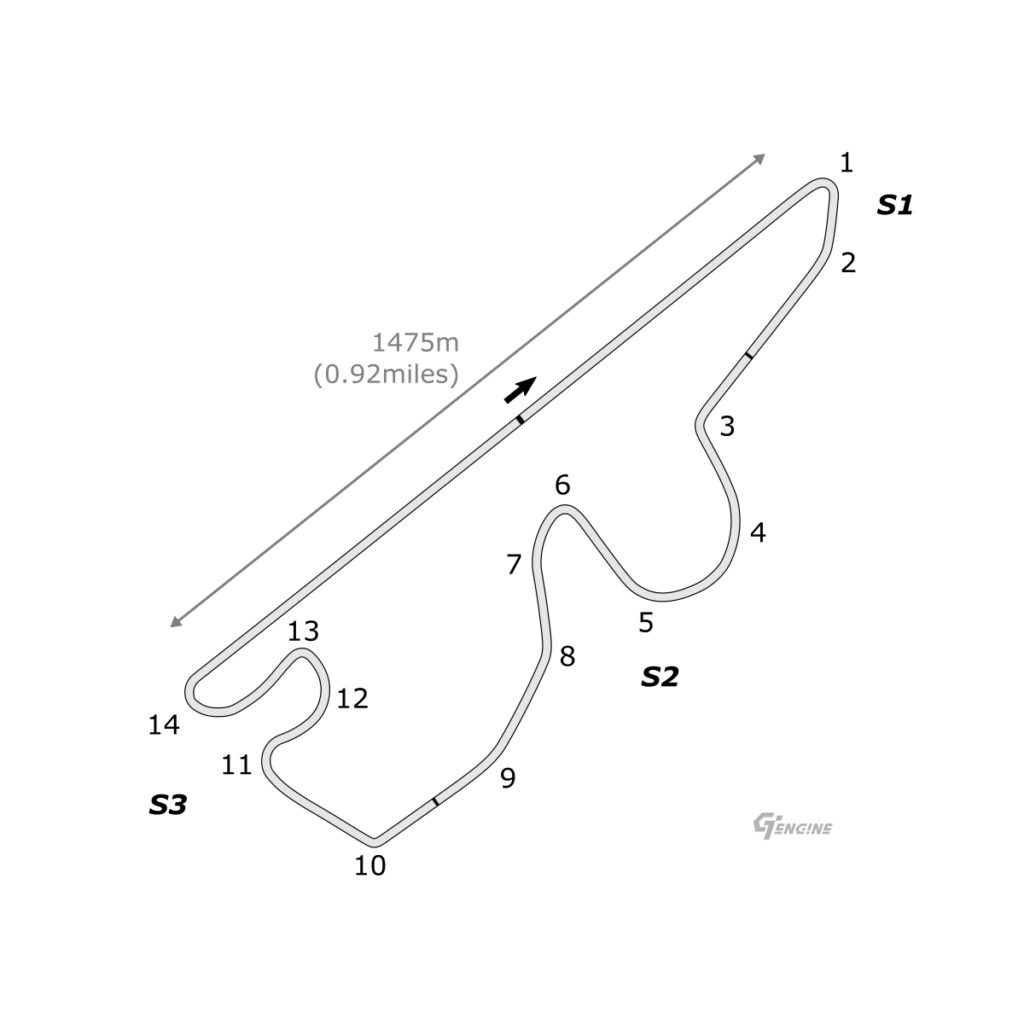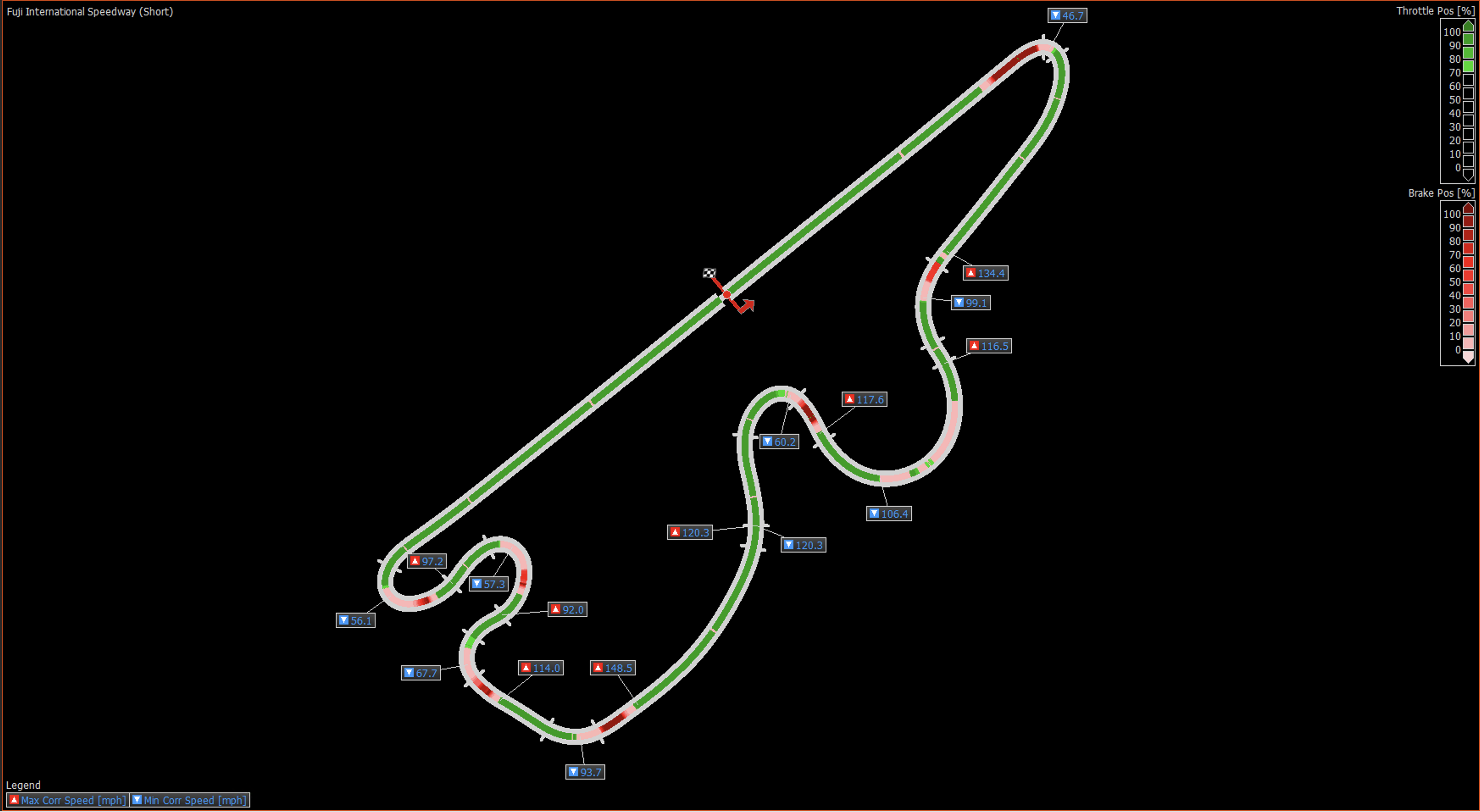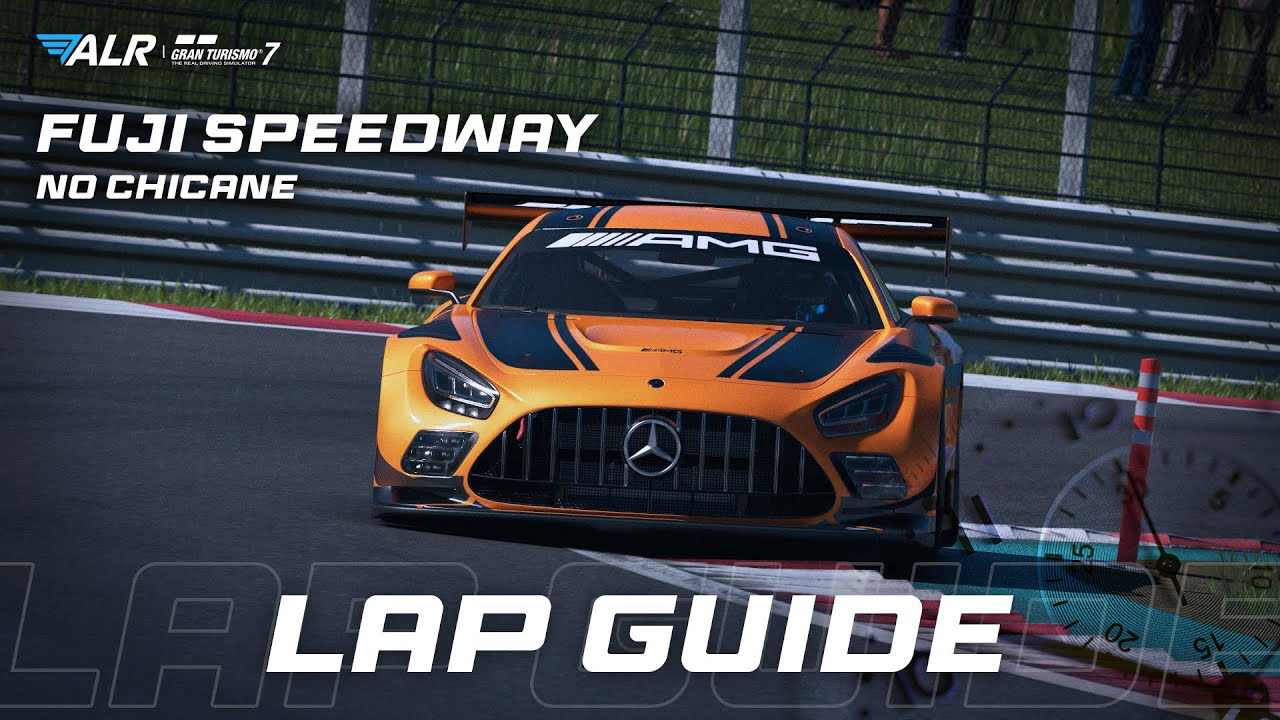Overview
Long sweeping corners are a common theme at many Japanese tracks and Fuji Speedway is not an exception. But this track is a lot more special, combining the fast and flowing sectors one and two with the slow sector. And while many think that faster corners play the biggest role in a good lap time around Fuji Speedway, it is actually a good last sector that is vital for your lap time. Gran Turismo does offer us an alternative Fuji Speedway layout without the chicane at the start of sector 3, which does make it a bit faster, but definitely doesn’t make this whole part of the track less important. Let’s see what key points are there to master a lap around Fuji Speedway Short.
Spotting the braking point for turn 1 is more tricky that it seems, as so many factors such as wind, slipstream, tire conditions and more play into where exactly you need to brake. You will need precise car placement for a good run through the long turns 4-5, and the fast and wide exit of turn 6 will set up your whole run into now a faster kink of turn 10. The whole last sector section of turns 11, 12 and 13 will test your trailbraking skills, car placement and throttle control. But most importantly you will need a perfect late apex setup for turn 14, since the exit of it will effect your whole run through the almost 1500m long main straight.

For the more in-depth guide on how to find pace around Fuji [short course] we highly recommend to watch our dedicated Lap Guide video that you can find down below.
Lap Guide
Braking Zones and Corner Speeds

History
Fuji International Speedway began life in unusual circumstances, when plans for a NASCAR-style oval set in the foothills of the famous mountain were put forward in the early 1960s. With Honda’s Suzuka test track already established, the new facility would also provide the other manufacturers of the burgeoning Japanese motor industry another track to test their two and four wheeled machinery.
The circuit opened in December 1965, though racing did not get under way until the following year. Among the first international stars to sample the course was Jim Clark, who was flown in to take part in a Formula Three race. The American connections remained, despite the loss of NASCAR, in the shape of the USAC Indycars, which held the Fuji 200 exhibition race in October 1966. Jackie Stewart took victory ahead of Bobby Unser. Can-Am also visited in 1968, choosing to run the course in an anti-clockwise direction, possibly to alleviate the dangers of the high-speed entry onto the banking. You can learn more about the history of the Fuji International Speedway here.
Telemetry
You can download the telemetry from Iggy’s fast lap shown in the lap guide video above and use it to compare to your own captured telemetry. If you need help getting started capturing and viewing your own Gran Turismo telemetry you can check out our quick start guide.

Comments are closed